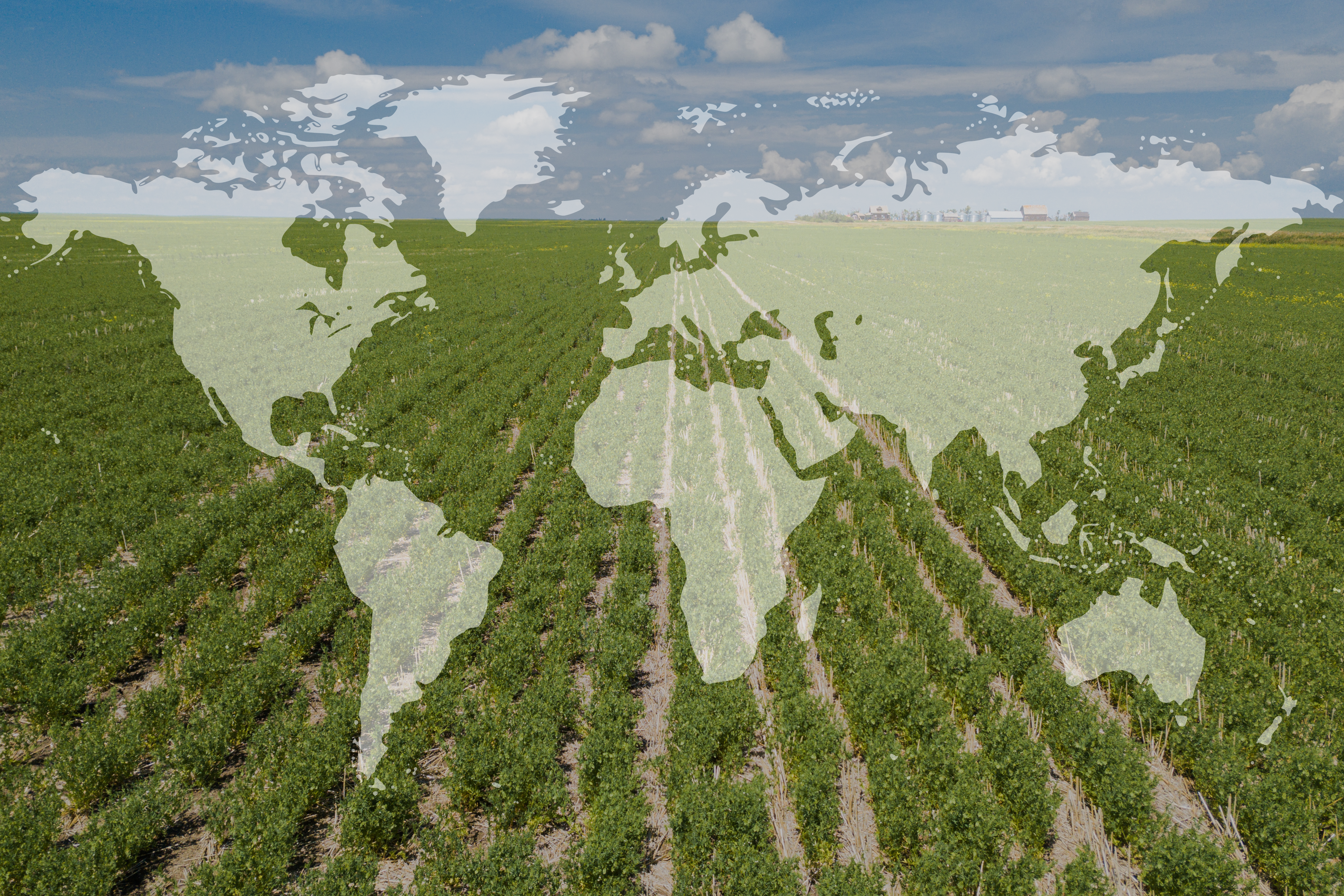By Brian Clancey, STAT Publishing
October 2021
Canada is not seen as a major player in global chickpea and dry edible bean markets, but its importance cannot be underestimated. In both dry edible bean and Kabuli chickpea markets, Canada accounts for around 7% of annual global trade.
This does not make Canada a price leader, but as a result, this year’s production problems in the Prairies and parts of the United States (U.S.) has focused the attention of global markets on our situation.
According to the most recent production estimates from the United States Department of Agriculture (USDA) and Statistics Canada (StatCan), our combined production of white beans is down 27% at 338,000 tonnes, while coloured bean output will drop 30% to 1.114 million tonnes, and chickpeas will plunge 51% to 201,000 tonnes.
The declines in beans reflects the combined effects of a lower seeded area and massive yield reductions in some key producing regions.
Even though area in chickpeas was little changed because gains in the U.S. offset declines in Canada, the areas where they are grown suffered from severe drought during the growing season. This year’s chickpea harvest was estimated at 63,900 tonnes. StatCan used satellite imaging and agroclimatic data to determine numbers.
Interestingly, Saskatchewan Agriculture was more optimistic about yields in that province. Basing its number on information given by crop reporters around the province, it thought the provincial yield was 797 pounds per acre, compared to StatCan’s 783 estimate.
However, the differences are not big enough to change the market’s view of this crop. Preliminary quality estimates for lentils and peas in Saskatchewan suggest a good portion of the chickpea crop will be No. 2 or better, however the drought affected the quantity of 9 mm and larger product that will be available.
This is clearly reflected in bids to farmers. During the 2020/21 marketing year, the average discount for 8 mm versus 9 mm chickpeas was $106.40 per tonne. Since the start of the current marketing year it has averaged $183.50. For 7mm, the discount from 9 mm jumped from $188 last season to $322 per tonne so far this season.
Demand in the North American market appears to be shifting toward large caliber chickpeas. Processors in the United States are now emphasizing those varieties. That shift is critical because our exports to the U.S. will likely grow because that country is facing a fundamental shortage of product. The U.S. is already our second most important buyer. During the previous five marketing years, sales averaged 33,300 tonnes per season, compared to 35,000 tonnes to Pakistan.
Unless we reduce the quantity of chickpeas sold to domestic buyers, total exports will likely drop from around 162,800 tonnes last season to 126,700 tonnes.
Exporters and processors are expected to focus on the U.S. because it is a premium market with fewer logistical problems. Our main competitor will be Mexico, but they will not be a factor until the first half of 2022.
Interestingly, in most years, we export more chickpeas than Mexico. The world’s largest Kabuli chickpea exporter is Russia, but they focus on Pakistan and Turkey. The last time they exported chickpeas to the U.S. was in 2018 and that was only 195 tonnes.
The situation does not look that much different for dry edible beans, especially classes such as pinto. Unfortunately, StatCan did not break down production by class.
All that is known is navy or white bean output is currently estimated at 102,500 tonnes, down from 144,800 tonnes last year, while output of all types of colored beans dropped from 345,000 to 249,000 tonnes.
Edible bean yields did not suffer as much as chickpeas because a large part of the crop is grown in Eastern Canada, while a good portion is under irrigation in Western Canada. However, land in all classes dropped from 457,200 to 373,500 acres.
Earlier they estimated 90,000 acres of pinto beans were sown this year, down from 97,300 acres last year. However, Saskatchewan’s estimated 14,500 acres of beans were not broken down by class.
Drought conditions in North Dakota resulted in a huge drop in pinto bean output in the U.S. Available supplies likely sank from 652,000 to 487,000 tonnes. This means exports will be down. There should be enough beans to cover most domestic demand, which would limit Canada’s ability to increase pinto bean sales to that country.
However, the projected drop in U.S. exports will open up other opportunities, possibly including our domestic market. Canada is a net exporter of beans, but the U.S. is this country’s main source for imported product. During the previous five years, imports averaged 73,000 tonnes per year and are currently projected at 61,000 tonnes this season, up from 55,400 tonnes last season.
Any expansion of domestic sales would be a significant benefit to growers because it will help ensure steadier demand going forward. However, a great deal of domestic demand and many export destinations are relationship based, with some buyers demanding sellers be able to trace their shipments back to the farm. As with peas and lentils, there are buyers who just want beans at the right price.
Growers have two choices: just sell or develop a strong relationship with a processor or an exporter in order to understand what they need. The latter option carries with it the possibility to obtain better prices in the future and further diversify the pulses they grow to include dry edible beans.
Brian Clancey is the Editor and Publisher of www.statpub.com market news website and President of STAT Publishing Ltd. He can be reached at editor@statpub.com.


